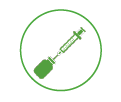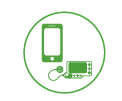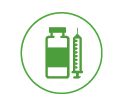American Diabetes Association Standards of Medical Care in Diabetes—2022
Title: “Chapter 7: Diabetes Technology: Standards of Medical Care in Diabetes - 2022.”
Journal: Diabetes Care; 45(Suppl. 1):S97–S112, 2022 | https://doi.org/10.2337/dc22-S007
Author: American Diabetes Association Professional Practice Committee
Introduction
The American Diabetes Association (ADA) Standards of Medical Care (SOC) in Diabetes provides one of the most respected and current guidelines for diabetes care. Updated annually, the recommendations are intended to provide clinicians, patients, researchers, and payers with the components of diabetes care, general treatment goals, and tools to evaluate the quality of care, as well as guidelines for medical, pharmaceutical and lifestyle management.
Grading of Clinical Evidence - “A” ratings are based on large well-designed clinical trials (meta-analysis, RCTs, multi center trials) and considered the strongest category. “B” (well-conducted cohort studies) and “C” (poorly controlled or uncontrolled studies) ratings are given for supportive evidence, not as strong as “A.” An “E” rating is given for expert consensus or clinical experience (no evidence from clinical trials).
Recommendations

Real time continuous glucose monitoring (RT-CGM) (A) or intermittently scanned continuous glucose monitoring (IS-CGM) (B) should be offered for diabetes management in adults with diabetes on multiple daily injections (MDI) or continuous subcutaneous insulin infusion (CSII). |
 RT-CGM (B) or IS-CGM (E) should be offered for diabetes management in youth with type 1 diabetes on MDI or CSII who are capable of using the device safely (either by themselves or with a caregiver). RT-CGM (B) or IS-CGM (E) should be offered for diabetes management in youth with type 1 diabetes on MDI or CSII who are capable of using the device safely (either by themselves or with a caregiver). |
 Initiation of CGM, CSII or Automated Insulin Delivery (AID) early in the treatment of diabetes can be beneficial. (C) Initiation of CGM, CSII or Automated Insulin Delivery (AID) early in the treatment of diabetes can be beneficial. (C) |
 In patients on MDI and CSII, RT-CGM devices should be used as close to daily as possible for maximal benefit. A IS-CGM devices should be scanned frequently, at a minimum once every 8 h. (A) In patients on MDI and CSII, RT-CGM devices should be used as close to daily as possible for maximal benefit. A IS-CGM devices should be scanned frequently, at a minimum once every 8 h. (A) |
 Periodic use of RT-CGM or IS-CGM or use of professional CGM can be helpful for diabetes management in circumstances where continuous use of CGM is not appropriate, desired, or available.1 (C) Periodic use of RT-CGM or IS-CGM or use of professional CGM can be helpful for diabetes management in circumstances where continuous use of CGM is not appropriate, desired, or available.1 (C) |
 RT-CGM (A) or IS-CGM (C) can be used for diabetes management in adults with diabetes on basal insulin. RT-CGM (A) or IS-CGM (C) can be used for diabetes management in adults with diabetes on basal insulin. |
 AID systems should be offered for diabetes management to youth and adults with T1D. (A) AID systems should be offered for diabetes management to youth and adults with T1D. (A) |
 Systems that combine technology and online coaching can be beneficial in treating pre-diabetes and diabetes for some individuals. (B) Systems that combine technology and online coaching can be beneficial in treating pre-diabetes and diabetes for some individuals. (B) |
 Insulin pump therapy can be offered for diabetes management to youth and adults on MDI with T2D. (A) Insulin pump therapy can be offered for diabetes management to youth and adults on MDI with T2D. (A) |
Discussion Points

Updated guidelines state CGM should be offered for all adults on MDI and CSII who are capable of using the device safely. |

The ADA strengthened its language recommending CGM for all adults on insulin, now stating that CGM “can be used” by those on basal-only therapy. |

RT-CGM (B) or IS-CGM (E) should be offered for diabetes management in youth with T1D on MDI or CSII. |

Key Insights
- The ADA supports the “Beyond A1C” movement, noting, “Time in Range, time below range, and time above range” are all useful tools for guiding changes in therapy; this can help providers gain more insight into their patients’ glycemic control and provides more personalized and actionable care.2
- The ADA also strengthened its language recommending CGM for all adults on insulin, now stating that CGM “can be used” by those on basal-only therapy.
- Given that A1C does not provide information on glycemic variability, the use of CGM-derived metrics can help patients identify variability to reduce their risk of hypoglycemia.2
- Consistent with other studies we have seen3, the ADA states that early initiation of CGM can be beneficial.
- The ADA is starting to recognize digital coaching and digital self management as effective methods in diabetes care.
- While RT-CGM and IS-CGM both have been recognized by the ADA in the same category, important benefits of RT-CGM have been noted in recent studies, supporting higher level of evidence of its use.4,5
This guide is for concept illustration only. All images are representational.
1. American Diabetes Association Professional Practice Committee; 7. Diabetes Technology: Standards of Medical Care in Diabetes—2022. Diabetes Care 1 January 2022; 45 (Supplement_1): S97–S112. https://doi.org/10.2337/dc22-S007
2. Battelino T, Danne T, Bergenstal RM, et al. Clinical targets for continuous glucose monitoring data interpretation: recommendations from the international consensus on time in range. Diabetes Care 2019;42:1593–1603
3. Mulinacci G, Alonso GT, Snell-Bergeon JK, Shah VN. Glycemic Outcomes with Early Initiation of Continuous Glucose Monitoring System in Recently Diagnosed Patients with Type 1 Diabetes. Diabetes Technol Ther. 2019 Jan;21(1):6-10
4. Reddy M, Jugnee N, El Laboudi A, Spanudakis E, Anantharaja S, Oliver N. A randomized controlled pilot study of continuous glucose monitoring and flash glucose monitoring in people with type 1 diabetes and impaired awareness of hypoglycaemia. Diabet Med 2018;35:483–490
5. Hásková A, Radovnická L, Petruželková L, et al. Real-time CGM is superior to flash glucose monitoring for glucose control in type 1 diabetes: the CORRIDA randomized controlled trial. Diabetes Care 2020;43:2744–2750
LBL-1000379 Rev001
Related Content
The Use of Advanced Technology in Management of Persons with Diabetes 2021 The American Association of Clinical Endocrinology (AACE) conducted literature searches for relevant articles published from...
A Joint Statement of the European Association for the Study of Diabetes and the American Diabetes Association Diabetes Technology Working Group Petrie J, et al. Improving the Clinical Value and...

